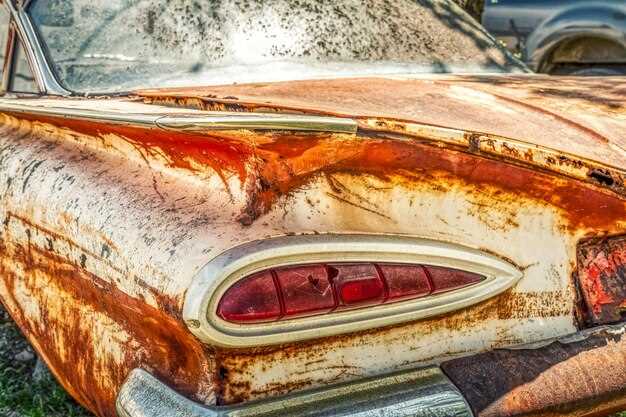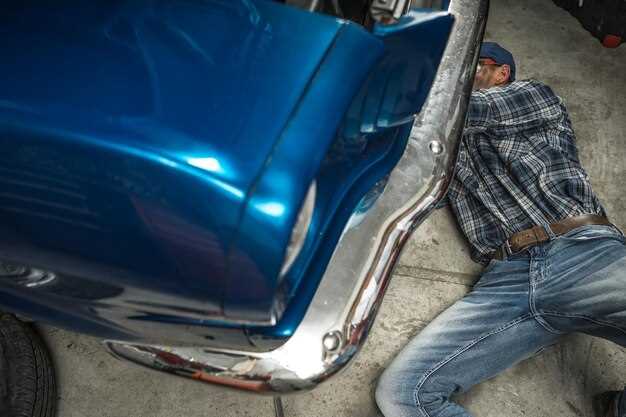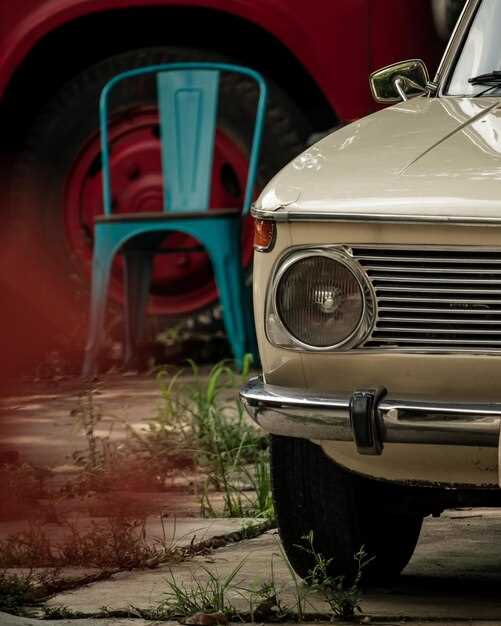
Classic cars are not just vehicles; they are cherished pieces of history that reflect a bygone era of automotive craftsmanship. However, with age comes the inevitable threat of rust, which can significantly compromise both the appearance and structural integrity of these treasured machines. The prevention of rust on classic cars requires diligent care and attention to several key techniques that can prolong their lifespan and maintain their value.
Effective rust prevention begins with understanding the underlying causes of corrosion. Classic cars are typically more susceptible to rust due to their age and the materials used in their construction. Frequent exposure to moisture, road salts, and fluctuating temperatures can accelerate the development of rust if left unchecked. Therefore, implementing proactive measures is essential for preserving the beauty and functionality of these vehicles.
In this article, we will explore practical tips and techniques that every classic car owner should consider to prevent rust. From routine inspections to protective coatings, each strategy plays a crucial role in mitigating rust damage. By prioritizing prevention, classic car enthusiasts can ensure their automotive investments remain in pristine condition for years to come, allowing future generations to appreciate the allure of these remarkable machines.
Preventing Rust on Classic Cars: Tips and Techniques
Classic cars are prized possessions that require ongoing care and maintenance, especially when it comes to rust prevention. Rust can compromise the structural integrity and aesthetics of your classic vehicle, making it essential to implement effective prevention strategies.
One of the most crucial steps in rust prevention is to ensure your classic car is regularly washed and waxed. This practice removes dirt, salt, and other corrosive substances that can lead to rust formation. Pay special attention to the undercarriage, wheel wells, and any areas prone to moisture accumulation.
Applying a high-quality rust inhibitor or protective coating can significantly enhance the longevity of your classic car. Consider using products specifically designed for automotive use, as they create a barrier against moisture and air, two primary contributors to rust development.
Storage plays a pivotal role in rust prevention. Keeping your classic car in a climate-controlled environment can minimize exposure to humidity and temperature fluctuations. When storing the vehicle, use a breathable car cover to protect it from dust and moisture while ensuring proper ventilation to avoid trapping humidity underneath.
Inspect your classic car regularly for any signs of rust, especially in vulnerable areas such as seams, fenders, and lower body panels. Early detection allows for prompt repairs, preventing the spread of rust and the potential need for extensive bodywork later on.
Finally, treating any scratches or chips in the paint immediately is vital. These blemishes can expose bare metal, making your classic car more susceptible to rust. Use touch-up paint or sealing products to protect these areas promptly.
By implementing these tips and techniques, classic car owners can effectively prevent rust and preserve their vehicles’ beauty and value for years to come.
Choosing the Right Rust-Resistant Coatings for Classic Cars

When it comes to maintaining the beauty and longevity of classic cars, selecting the appropriate rust-resistant coatings is crucial for effective rust prevention. These coatings act as a barrier against moisture and corrosive elements, ensuring that your classic vehicle remains in pristine condition.
Here are key factors to consider when choosing the right rust-resistant coatings:
- Type of Coating: Various types of coatings are available, including:
- Epoxy Coatings: Known for their durability and strong adhesion, epoxy coatings provide excellent protection against rust.
- Polyurethane Coatings: These offer a high-gloss finish and good resistance to UV rays, making them suitable for external surfaces.
- Rust Inhibitors: These are chemical compounds added to paint or primer that slow down the rust process.
- Application Method: Choose between spray, brush, or roll-on applications.
- Spray Applications: Ideal for even distribution and hard-to-reach areas.
- Brush Applications: Useful for detailed work, allowing precise application where needed.
- Roll-On Applications: A quick method for larger surfaces but may require more effort for an even look.
- Surface Preparation: Properly prepare the surface before applying any coating. Clean, sand, and remove any existing rust to ensure maximum adhesion and effectiveness.
- Environmental Resistance: Ensure the chosen coating can withstand local weather conditions, whether it’s moisture, salt, or temperature fluctuations.
- Longevity: Opt for coatings with proven durability and longevity to minimize the need for frequent reapplication.
In summary, the right rust-resistant coating for a classic car combines durability, ease of application, surface compatibility, and environmental resilience. Investing time in selecting the appropriate product will pay off in the long run, ensuring your classic car remains rust-free and maintains its value.
Regular Maintenance Practices to Combat Rust on Vintage Vehicles

Maintaining a classic car requires dedication and attention, especially in the fight against rust. Regular maintenance practices are essential for effective rust prevention on vintage vehicles. Here are key techniques to consider:
1. Regular Washing and Waxing: Keeping your car clean is the first step in rust prevention. Frequent washing removes dirt, salt, and moisture that can cause corrosion. After washing, applying a high-quality wax creates a protective barrier against moisture and contaminants.
2. Inspecting Underbody and Wheel Wells: The underbody and wheel wells are prone to rust due to exposure to road debris and moisture. Regular inspections help identify any signs of rust early. Using a flashlight, check for bubbling paint or flaking metal, and address these areas promptly.
3. Applying Rust Inhibitors: After cleaning, consider applying rust inhibitors to vulnerable areas. These products create a protective film that can significantly reduce the chances of rust formation.
4. Storing Your Vehicle Properly: Indoor storage is ideal for vintage cars. A climate-controlled environment minimizes humidity and temperature fluctuations, both of which contribute to rust. If indoor storage isn’t possible, use a breathable car cover to protect against moisture accumulation.
5. Ensuring Proper Draining: Make sure that any water drainage paths, such as those in the trunk and engine bay, are clear. Blocked drainage can lead to water pooling and create rust issues over time.
6. Regularly Checking Seals and Gaskets: Inspecting and maintaining the seals around windows and doors is vital. Cracks and deteriorated seals can allow water ingress, which promotes rust. Replace any worn seals promptly to keep moisture at bay.
7. Painting and Touching Up: Any scratches or chips in the paint should be promptly repaired. Exposing the bare metal increases vulnerability to rust. Regularly touch up paintwork to maintain a strong protective layer and prevent moisture from reaching the metal.
By integrating these practices into your vintage car maintenance routine, you can significantly enhance rust prevention, ensuring that your classic car remains in excellent condition for years to come.
Best Storage Solutions to Minimize Rust Risks for Classic Cars
Storing a classic car properly is crucial for its preservation and rust prevention. To minimize rust risks, consider selecting an ideal location that is dry, cool, and well-ventilated. Avoid damp basements or unconditioned garages where humidity can encourage corrosion.
Use a quality car cover specifically designed for indoor or outdoor use. These covers should be breathable to prevent moisture buildup while still offering protection from dust and debris. Ensure that the cover fits well to avoid any movement that might scratch the car’s surface.
Humidity control is essential in the storage environment. Consider investing in a dehumidifier to keep moisture levels in check, especially during humid months. This will create a dryer atmosphere, significantly reducing the chances of rust forming on your classic car.
An elevated platform or a dedicated car lift can also help minimize rust risks. Storing the car above ground level not only keeps it safe from potential flooding but also allows for better air circulation around the vehicle.
Regular maintenance before storage is key for effective prevention. Wash and wax the car thoroughly to remove any contaminants that might promote rust. Applying a protective wax layer will act as a barrier against moisture and other corrosive elements.
Finally, avoid direct contact between the car and the ground by using rust inhibitors or protective mats. These will further insulate your classic car from moisture and potential rust damage, ensuring it remains in pristine condition for years to come.




